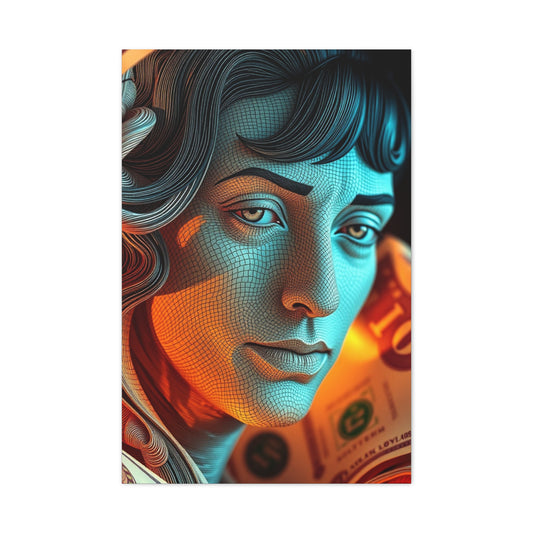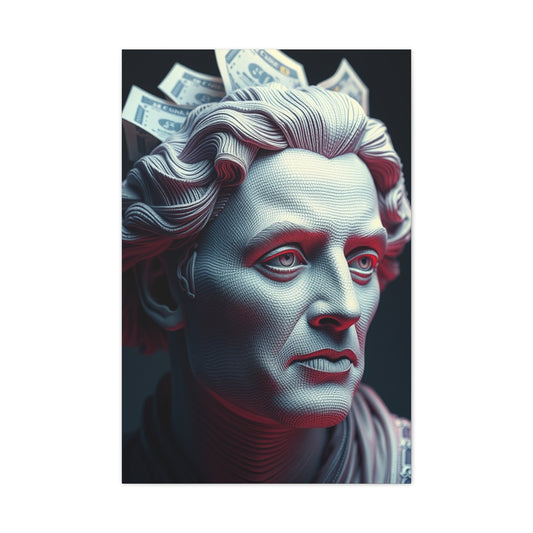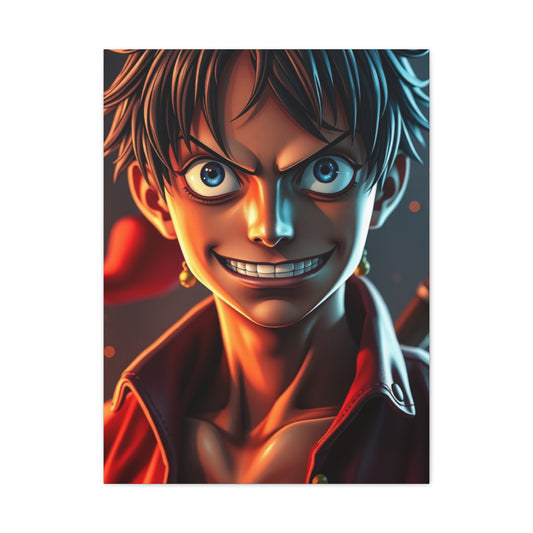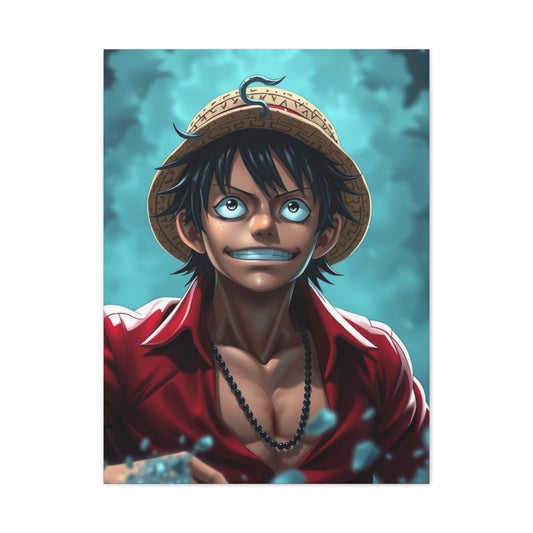A Life of Discipline: The Unlikely Beginnings of a Painter
Before Hugo Grenville became renowned for his radiant canvases awash in light and color, he walked a very different pathone shaped by discipline, tradition, and the uniformity of military life. As a young Officer serving in the prestigious Coldstream Guards, Grenville was immersed in an environment steeped in ceremony and governed by an exacting structure. Every aspect of his early life revolved around order, precision, and the weight of heritage. These formative years were painted not in pastels and bright oils, but in the muted tones of protocol and regiment.
Yet, within that order, something unexpected began to stir. The rigor of his duties instilled in him an exacting eye for detail and a respect for craftsmanship that would become invaluable tools in his later life as an artist. The military may have provided a strong backbone, but it could not contain his inner yearning for creative freedom and emotional expression. While others around him thrived in the certainties of rank and routine, Grenville quietly nurtured a curiosity for something less defined and far more luminous.
It would be simplistic to view his transition from soldier to artist as an escape; it was more of an awakening. During this period, Grenville absorbed the world around him with the clarity and sharpness of a trained observer. While his comrades polished boots and reviewed drills, he began to see the poetry in the overlooked texture of light on a jacket, the rhythm in a line of marching boots, the fleeting silhouettes cast by early morning sun on parade grounds. Without realizing it, he was already building the foundation for a future driven not by command but by creation.
From Commercial Clarity to Chromatic Freedom
After leaving the military, Grenville entered yet another structured environment bustling and competitive world of advertising. At J. Walter Thompson, one of the most established firms in the industry, he immersed himself in campaigns, slogans, and the art of persuasion. This chapter of his life may have seemed like a departure from creative integrity, but in hindsight, it provided something crucial. Advertising demanded an understanding of aesthetic impact, composition, and the psychological power of imagery. It was here that Grenville refined his grasp of visual storytelling, learning how to attract the eye and stir emotion through calculated design.
Though the world of advertising was vibrant and fast-paced, it lacked something essential for Grenville: soul. The constraints of market demands and brand messaging left little room for personal exploration or artistic truth. The heart of a painterone he had long tried to silence or reason withgrew louder with each passing year. The balance had tipped. Where once he had found security in structure and strategy, he now yearned for authenticity, imperfection, and freedom.
By the late 1980s, Grenville made a life-altering decision. He stepped away from the corporate world and surrendered to the unpredictable rhythm of an artist’s life. With this bold move came riskfinancial, personal, and professional, also immense liberation. He picked up the brush not just with ambition, but with reverence. Initially, his focus was technical mastery, drawing inspiration from classical styles and time-honored methods. His early works displayed control, discipline, and a deep appreciation for form, but they also hinted at a deeper longing. It was clear Grenville was still discovering his voice.
That journey of discovery was not linear. There were moments of doubt, periods of frustration, and the ever-present fear that perhaps he had come to art too late. But each canvas taught him something new. He began to understand that technique was merely a vehicle, that true art lay not in perfection, but in emotion. With every brushstroke, he grew closer to a style that felt less like replication and more like revelation. The quiet whisper of self-doubt had gradually transformed into a resounding chorus of confidence, one that echoed in the colors and forms that danced on his canvases. Each work he created was not just a depiction of reality but an expression of his inner world reflection of his ever-evolving self. The once-structured precision of advertising gave way to the chaotic beauty of spontaneous creation. Grenville had, in essence, left behind a world that demanded conformity and stepped into one that embraced the vulnerability of pure expression. What began as a search for freedom ultimately became an ongoing journey into the depths of his own authenticity.
Illumination in Paris: The Turning Point Toward Light
The transformation that would define Hugo Grenville’s mature work came unexpectedly, during a quiet trip to Paris. In the city of light, surrounded by the spirits of Monet, Bonnard, and Vuillard, Grenville encountered not just paintings, but philosophies. In particular, it was the works of the post-Impressionists and the Nabis that ignited something profound. Their devotion to color as emotion, to pattern as poetry, and to the everyday as sacred completely altered his approach. In that moment, Grenville did not simply admire these works understood them.
This shift marked the true beginning of his signature style: bold yet tender, luminous yet grounded. Gone were the muted tones and rigid compositions of his earlier works. In their place emerged a radiant palette, full of warmth and sensuality. His paintings began to celebrate light, not as an effect, but as a subject in itself. Sunlight filtered through windows, danced on skin, and rippled across fabrics. His brush no longer aimed to reproduce reality, but to reinterpret it through emotion and memory.
From that point forward, Grenville embraced the idea that beauty need not be grand or exotic. It could be found in a quiet interior, in the tilt of a head, in the fleeting glow of morning light. Each painting became a reflection of gratitude, a meditation on presence, and a tribute to the human capacity to find joy in the ordinary.
His military past was not forgotten, remaining as a quiet undercurrent, evident in the precision of his lines and the compositional strength of his work. But now it served a different purpose. Rather than confining him, it gave his paintings structure and confidence, allowing the color to soar freely within a trusted framework. The discipline that once defined him had not been discarded; it had been transformed.
Today, Grenville’s work is celebrated for its emotional resonance, its chromatic richness, and its timeless elegance. He stands as a rare example of an artist who has lived many lives and distilled each into his canvases. His journey from the regimented paths of military service to the fluid world of fine art is not just a tale of reinvention, but a testament to the enduring power of following one’s inner calling.
For those who stand at a crossroads, unsure whether it’s too late to choose passion over practicality, Grenville’s story offers a powerful reminder: it is never too late to choose sunlight.
A Parisian Awakening: The Turning Point in Hugo Grenville’s Artistic Journey
In the winter of 1999, Hugo Grenville found himself amidst the storied grandeur of the Grand Palais in Paris. The exhibition that drew him there was a powerful retrospective of the Fauvist movement, a celebration of artists who dared to break the mold of academic painting and embrace colour as a language of feeling. As Grenville wandered the gallery, the works of André Derain, Henri Matisse, and Maurice de Vlaminck confronted him not with subtlety, but with a radical boldness. The canvases roared with pure, undiluted colourwild ceruleans, burning crimsons, and luminous greens that refused to behave politely within their frames. This wasn’t just art; it was a storm of emotional candour, an unfiltered conversation between the artist’s inner life and the viewer.
Standing among the vibrant compositions, Grenville experienced something deeply transformative. The encounter went beyond admiration. It was visceral. He wasn’t merely observing paintings; he was participating in a visual revelation. It was as if the walls of the Grand Palais had cracked open to reveal a deeper truthcolour could do more than depict reality; it could embody joy, sorrow, longing, and exaltation. In that moment, Grenville’s relationship with his own art shifted irreversibly. He returned to his studio not only inspired but irrevocably changed. What had been a cautious and contemplative approach to colour now exploded into a pursuit of luminous expression.
This revelation did not unfold slowly. It struck with the immediacy of lightning. The once-muted hues in Grenville’s work began to blaze with confidence. His earlier tendency toward shadow and structure gave way to a radiant openness. It was as if he had unshackled his creative instincts and allowed light to take command. The shift was not simply stylistic, was philosophical. Grenville had seen how colour could carry emotional weight, how it could serve as both subject and substance. That exhibition in Paris wasn’t merely an inspiration, it was a call to arms.
Embracing Colour as Emotional Truth: A New Artistic Language
In the wake of that pivotal moment in Paris, Hugo Grenville’s studio became a laboratory of light and feeling. His canvases no longer whispered; they sang. He began to explore colour not as a tool for representation but as a living entity, charged with emotion and energy. The entire vocabulary of his work evolved. Each painting became a composition of moods, structured not around form alone, but around the resonances of hue and harmony.
This newfound boldness gave rise to what can only be described as a personal renaissance. Grenville let go of restraint and welcomed flamboyance as extravagance, but as sincerity. In doing so, he tapped into something elemental. His works began to radiate a sense of warmth and intimacy that invited viewers to feel rather than analyze. Colour was no longer an afterthought. It was now the message itself. Even areas traditionally considered negative spaces, quiet backgrounds often left blank or toned downbegan to hum with subdued vibrancy, as though silence itself had been coloured in.
Grenville’s use of light also evolved dramatically. His brushwork danced in the service of luminosity. Shadows, where they appeared, were not dark but saturated with tonal complexity, contributing to an overall sense of balance. Whether depicting interiors bathed in late afternoon glow or the saturated richness of Mediterranean gardens, his paintings conveyed an atmospheric tension that made the air itself feel alive. This was not realism in the traditional sense. It was emotional realism brushstroke imbued with feeling, each composition echoing with subtle narratives.
Throughout his growing body of work, Grenville maintained a deep sensitivity to the poetic potential of ordinary moments. A bouquet of sunlit flowers arranged on a weathered table, a quiet bedroom corner filled with patterned fabric, and a nude reclining in meditative solitude became his muses. Through them, he channeled an impressionistic sensibility filtered through his vibrant lens. His art was not a rejection of the world’s simplicity, but a celebration of its quiet splendour, refracted through a kaleidoscope of colour.
A Lasting Legacy of Light: The Enduring Influence of Fauvism
More than two decades have passed since Hugo Grenville’s life-changing encounter at the Grand Palais, but its impact continues to pulse through every canvas he creates. The spirit of Fauvismthe freedom, the fearless embrace of chromatic emotion, the devotion to lightremains the beating heart of his practice. Yet Grenville’s work is not derivative. He has absorbed the influence and transformed it into a distinctly personal voice, one that merges the decorative richness of post-impressionism with a deeply intimate sensibility.
You can see this legacy in the rhythmic arrangements of his still lifes, where even the most mundane objectsa porcelain vase, a patterned rug, a lace curtainare rendered with reverence and intensity. In Grenville’s world, nothing is overlooked. Every detail contributes to a symphony of sensation. His interiors do not merely depict rooms; they suggest memory, nostalgia, and timelessness. They are places where stillness becomes sacred and colour becomes a form of reverence.
His figurative work, too, carries this emotional weight. Reclining nudes are not anonymous bodies but introspective beings, their forms bathed in gentle light, their presence contemplative rather than performative. There is sensuality, yes, but also grace, quietude, and depth. Each figure is enveloped in an aura of empathy and understanding, reminding us that beauty lies not in perfection but in presence.
Perhaps most striking is the way Grenville's landscapes hum with a kind of lyrical vitality. His gardens are not mere renderings of place; they are invitations into a world where nature speaks in colour and rhythm. Trees sway not only in wind but in hue. Petals and leaves seem to breathe. Sunlight dapples across the canvas in gestures that feel both spontaneous and composed. His Mediterranean scenes, in particular, transport the viewer into a realm of sensuous delight where terracotta paths, lavender blooms, and cobalt skies merge into a vision of earthly paradise.
What elevates Grenville’s work is not simply technical skillthough that is clearly evidentbut a deeper, more profound dedication to joy. His paintings are, at their core, a response to beauty in its most essential form. They are not sentimental, but celebratory. They do not shy away from emotion but welcome it, honour it, and give it shape.
Even now, Grenville continues to evolve. His palette shifts subtly over time, echoing seasons, moods, and inner transformations. But the pulse remains the belief that art is a vessel for feeling, and that colour is the most direct path to the soul. That lesson, first learned in the hallowed halls of the Grand Palais, remains his guiding star.
In revisiting that moment in 1999, we do more than recount an episode from an artist’s biography understand the roots of a visual philosophy. Hugo Grenville’s Paris revelation was not a fleeting inspiration but a fundamental realignment. It transformed him from a painter of forms into a poet of light and emotion. And through that transformation, he has gifted the world a body of work that continues to sing softly, boldly, luminously with the enduring voice of colour itself.
The Poetic Lens of Hugo Grenville: Reimagining the Everyday
Hugo Grenville’s work invites us into a world where the ordinary is transformed into something quietly extraordinary. His art doesn’t shout for attention; it whispers gently, drawing viewers in with subtle power. At the heart of his vision is a rare ability to infuse everyday life with lyrical beauty. Each painting feels like a moment suspended in time, a glimpse into a softer, slower universe where everything holds meaning.
What makes Grenville’s artistic voice so resonant is not just his expert use of colorthough his palette is undeniably lush and luminousbut the way he breathes life into scenes others might pass by without a second glance. A simple vase of roses doesn’t merely sit on a table in his world; it radiates vitality and depth, every petal a stroke of energy and intimacy. Light, in his compositions, does more than illuminate. It reveals. It remembers. It invites us to pause and reflect.
There is an emotional undercurrent that courses through Grenville’s canvases. His art doesn’t just show us what is there invites us to feel what lies beneath. His brushwork captures fleeting sensations: the warm hush of a sunlit afternoon, the quietude of a room left undisturbed, the tender weight of stillness. Each work is a meditation, a private reverie rendered with painterly grace. In his pieces, even the most familiar it, a cup of tea or a softly folding draperybecome vehicles for profound reflection. They transcend the mundane, becoming symbols of memory, time, and experience.
One of the most striking aspects of Grenville’s work is his ability to transport us into a state of mindfulness. He slows us down, compelling us to see the details we might ordinarily overlook. The curve of a chair, the glimmer of a glass of water, and the delicate interplay of shadows on a wall element are imbued with significance, each small gesture treated with reverence. In his hands, the everyday becomes a space for contemplation, a space in which beauty is not merely seen but felt deeply within.
In a world often dominated by the hustle of modern life, Grenville’s art offers a balm, a reminder that we can still find peace and grace in the ordinary. His paintings echo the quiet moments that pass unnoticed in the rush of daily the fleeting warmth of sunlight that touches a surface, the slow accumulation of dust on a forgotten shelf, the subtle shift of color in a sky at dusk. These are moments that might easily be overlooked, yet Grenville elevates them to the level of art, showing us that beauty is found not just in grand gestures or dramatic scenes but in the delicate textures of our everyday surroundings.
Through Grenville’s lens, we are invited to reassess our relationship with the world around us. We begin to notice the poetry in the smallest of gestures, the elegance in the simplest of objects. The act of viewing his work becomes a form of quiet exploration, a journey through the rich textures and subtle emotional landscapes that he so expertly portrays. His canvases ask us to be present, to observe with intention, and to cultivate a deeper sense of gratitude for the life that unfolds before us each day.
What emerges is a body of work that transcends representation and enters the realm of visual poetry. Grenville’s paintings are deeply sensory, yet never overstated. They urge us to look beyond surfaces and discover the hidden narratives in our surroundings. Through this lens, the mundane is re-enchanted. We are reminded that beauty is not rare or inaccessible is all around us, waiting for our attention. In Grenville’s world, there is no need to seek out extraordinary moments. They are already here, woven into the fabric of the everyday, waiting for us to pause, to see, and to experience them in their full, delicate complexity.
Interior Worlds: A Dance of Pattern, Light, and Presence
Grenville's interiors are more than depictions of physical spaces; they are meditations on the human experience, subtly shifting and evolving with each glance. Each room is a microcosm of life’s quiet yet profound moments, where the visual narrative unfolds like a slow, gentle waltz. The artist doesn’t merely present the architecture or furniture within the frame, but also the essence of the daily rituals, the unspoken interactions between objects and the people who inhabit these spaces. The walls hold memories, the soft glow of light suggests a fleeting moment of peace, and the arrangement of furniture feels like an invitation to pause, to settle in, to breathe.
The use of light in Grenville’s interiors is particularly masterful. It is not just a tool to highlight or create contrast, but a narrative element in itself, filling the room with warmth, depth, and character. Soft rays filtering through a window might cast a delicate shadow on the floor, inviting the viewer to imagine the time of day and the emotions tied to that moment. The light seems to move, shifting subtly within the painting, reflecting the ebb and flow of time, much like the rhythms of life itself. It imbues the space with a sense of transience and continuity, a reminder that life’s most meaningful moments are often those that are quiet, unobserved, and fleeting.
What is also remarkable about Grenville’s work is his understanding of the domestic environment as a site of emotional complexity. His interiors are not static; they pulsate with the undercurrents of life. A chair placed slightly askew, a book left open on a table, a window left ajar, elements are not accidental but charged with meaning. They tell stories of lives lived in quiet spaces, of conversations that drift like the light through the room, of solitary moments shared with objects that carry their histories. Through these small details, Grenville speaks to the larger narrative of human existence, moments of connection, solitude, rest, and reflection.
Grenville’s brushwork further elevates the sense of intimacy in his interiors. The texture of the paint itself seems to embody the tactile nature of the environment he depicts. It is not simply a visual experience, but a sensory one. The viewer can almost feel the softness of a fabric or the coolness of a tiled floor. The impressionistic qualities of his style draw the viewer in, inviting them to move through the space with their eyes, to touch the surfaces and feel the quiet hum of life that inhabits them.
In his work, Grenville elevates the ordinary into the extraordinary. The mundane objects that populate the domestic sphere old chair, a lamp, a vase of flowersare rendered with a quiet reverence, showing how the smallest of things can hold great meaning. The act of daily living, with all its rhythm and repetition, is transformed into a form of art, where even the most mundane gesture can speak to something deeper. Grenville’s interiors are not just places to be, but places to reflect, to be present in the moment, and to understand the beauty in the subtleties of life’s everyday motions. Each brushstroke, each choice of color, and each interplay of pattern creates a space where time slows down, and the viewer is invited to experience the richness of the present moment.
Landscapes of Emotion: Light, Memory, and the Sacred in Nature
Step into one of Grenville’s Mediterranean scenes, and you’re stepping into more than a geographical locationyou’re entering a realm shaped by memory and mood. His landscapes do not aim to document exact topographies. Instead, they function as emotional cartographies, mapping the internal landscapes of feeling, remembrance, and longing. The light that slants across olive groves and terracotta rooftops carries with it the weight of nostalgia and the shimmer of possibility.
Grenville’s connection to nature is deeply intuitive. His brush captures not only what the eye sees but what the heart experiences. There is no rush in his rendering of the land. The pacing is slow, deliberate. The viewer is encouraged to linger, to move through the scene with the same reverence one might give a sacred place. In this way, Grenville’s landscapes are less about scenery and more about states of being. They are meditations in paint, echoing the rhythms of a world that modern life often encourages us to ignore.
This resistance to the speed and spectacle of contemporary life is one of Grenville’s quiet revolutions. His work reminds us of the importance of stillness, of being present to the subtle miracles embedded in the everyday. His paintings are acts of reclamationreclaiming time, attention, and the profound connection between people and their environments. In a culture driven by urgency and noise, Grenville offers an alternative: a call to slowness, to presence, to appreciation.
There is a spiritual dimension that threads through his approach to landscape. Nature is not a backdrop but a protagonist, imbued with agency and grace. Trees, hills, and skies are not passive subjectsthey seem to breathe, to murmur, to glow from within. In this sense, Grenville’s work touches on the transcendental. He elevates the familiarbe it a grove, a coastline, or a shaded terraceinto realms where memory and imagination converge.
At the heart of all Grenville’s work, whether interior or exterior, lies a desire to restore the viewer’s sense of wonder. His paintings are not escapist fantasies, but doorways into deeper truths. They suggest that lyricism is not the absence of reality but its fuller expression. By seeing with feeling, and painting with presence, Grenville reclaims the dignity of the overlooked and the everyday.
His canvases are offeringsrich in texture, emotion, and meaning. In them, we are invited to rediscover the poetry that surrounds us always: in the quiet corners of a home, the shifting light on a wall, the silent grace of an olive tree. In a fast-moving world, Hugo Grenville gives us a reason to pauseand in that pause, to see more clearly, feel more deeply, and live more fully.
Hugo Grenville: A Painter of Presence and Purpose
In an age increasingly shaped by fleeting trends and digital immediacy, Hugo Grenville stands as a resolute figure in contemporary art painting whose enduring relevance is rooted in his commitment to authenticity, beauty, and emotional resonance. His body of work not only reflects a remarkable technical skill but also embodies a deeper, more profound understanding of human experience through the lens of color and light.
Grenville's place on the judging panel of a prominent new open art prize is a testament to his standing within the art world. Yet it also speaks to something more vital: his dedication to mentoring and uplifting the next generation of artists. For Grenville, art is not a solitary pursuit but a communal dialogue, one that must be continually renewed through the discovery and encouragement of emerging voices. His role as a judge is not just honorary; it reflects his belief in the transformative power of creativity and his desire to see it flourish in all its forms.
From the beginning of his career, Grenville has remained unwavering in his values. He is a steadfast advocate for originality, emotional truth, and sincerityqualities that often feel elusive in the commercialized, fast-paced landscape of modern art. These principles are the bedrock of his artistic philosophy and continue to influence his approach to both painting and pedagogy. Whether mentoring young artists or curating selections for an art prize, Grenville is guided by a singular goal: to elevate the genuine, to champion the heartfelt, and to make space for beauty in its purest, most undiluted form.
A Journey Through Color, Emotion, and Atmosphere
Grenville’s upcoming exhibition in Palm Beach marks a significant moment in his ongoing artistic journey. This showcase, encompassing works that span a range of genres and locations, is a vivid reflection of his enduring preoccupation with color as an emotional force. His paintings do not merely depictthey evoke. They offer viewers an immersive experience, one that stirs memory, invites contemplation, and offers sanctuary from the noise of the outside world.
What unites these varied works is a shared chromatic language, one that Grenville speaks fluently and fearlessly. He has long been celebrated for his ability to orchestrate hues into symphonic compositions that pulse with vitality and feeling. From the soft blush of a summer sky to the bold richness of floral arrangements, each painting possesses an internal rhythm, a visual melody that hums beneath the surface. It is this emotional generositythis willingness to offer more than surface beautythat sets Grenville’s work apart.
In Palm Beach, visitors will have the rare opportunity to see this language of color and emotion unfold across canvas after canvas. There is something meditative in the way Grenville paints a room, a garden, or a figure. His settings, while rooted in the familiar, are charged with a sense of the extraordinary. The flutter of a curtain, the shadow on a sun-drenched wall, or the tilt of a chair becomes a quiet revelation. These are moments not captured in haste but rendered with care, patience, and reverence for the act of seeing.
To experience Grenville’s art is to slow down. It is to allow the eye to linger, to recognize the beauty in small details, and to reconnect with a more intuitive, less hurried way of engaging with the world. His work does not confront it invites. It does not suggest. And in doing so, it creates space for personal interpretation and emotional response. Viewers do not simply observethey enter.
The Timeless Alchemy of Light and Feeling
At the heart of Hugo Grenville’s artistic practice is a devotion to lightnot merely as a visual phenomenon but as a conduit for meaning, memory, and magic. In his hands, light becomes more than illumination; it becomes a storyteller. It shapes the mood of a room, caresses the petals of flowers, dances across fabric, and infuses even the quietest corners of his compositions with life. Through this alchemy of light and pigment, Grenville creates works that are at once intimate and expansive.
This timeless approach positions Grenville as a rare figure in today’s art world. While many artists chase novelty, he remains anchored in the enduring principles of beauty, presence, and emotional clarity. His paintings serve as gentle reminders of what can be felt when we truly see. In a time where distraction is constant and depth often sacrificed for speed, Grenville’s work offers a counterbalance. It speaks to the enduring value of craftsmanship and the quiet power of looking deeply.
His mastery lies not only in his technical finesse but in his capacity to convey atmosphere and inner states. Each canvas offers a delicate interplay between the real and the imagined, the tangible and the remembered. He paints not just what is in front of him, but what resonates within. This blending of perception and emotion is what allows his work to transcend genre and geography. Whether a still life, an interior, or a landscape, every piece pulses with an emotional undercurrent that invites reflection and connection.
Moreover, Grenville’s paintings serve as an antidote to the increasingly ephemeral nature of modern visual culture. They remind us of the permanence that art can be the idea that a painting can hold a moment, preserve a feeling, and continue to speak across time and space. In his commitment to this kind of permanence, Grenville asserts the continued relevance of painting as a vital, living form of expression.
His artistic philosophy is rooted in a reverence for the past, but it is never nostalgic. Instead, it is about continuityabout extending the lineage of figurative painting into the present with a fresh, dynamic voice. His influence, both through his work and his mentorship, ensures that this lineage is not only preserved but reimagined for a new generation. As an educator, a juror, and an artist, he continues to shape the conversation around what painting can be and why it still matters.
In sum, Hugo Grenville remains one of the most compelling and consistent voices in contemporary art. His unwavering dedication to color, light, and emotional depth sets him apart in a landscape often dominated by spectacle and immediacy. Through his canvases, he invites us into a quieter, richer worldone where beauty still matters, where sincerity is still powerful, and where the act of painting remains a form of devotion.
As he prepares to unveil his new body of work in Palm Beach, one thing is certain: Hugo Grenville is not simply showing us how to look. He is showing us how to feel. And in doing so, he continues to reaffirm what it means to be a true painternot just of images, but of life itself.




























